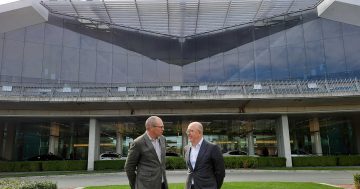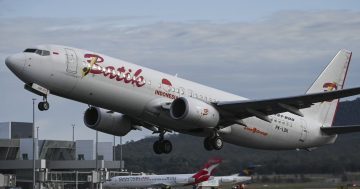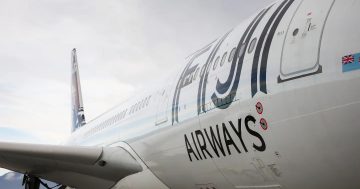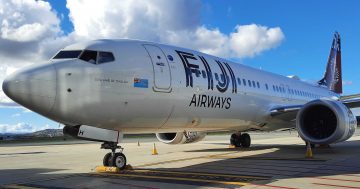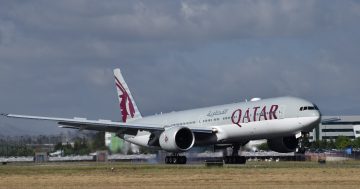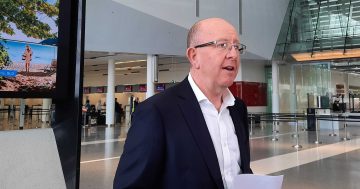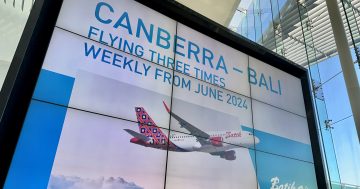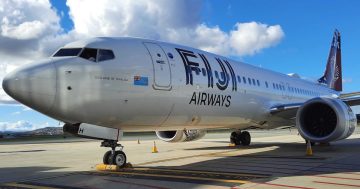
Canberra Airport’s international flights are attracting attention. Photos: Canberra Airport.
More low cost carriers, connections with China, and the continued growth of Canberra Airport as a freight hub are on the radar in the Preliminary Draft of the Airport’s 2020 Master Plan.
Over the next 20 years, the Airport envisages passenger numbers growing from the three million now using the facility to more than nine million, with built-in capacity to cater for expansion, and with relatively modest additions, the ability to look after 12 million passengers a year.
Head of Aviation, Canberra Airport, Michael Thompson said the airport wanted to build on the successful entry of Tigerair and the international carriers, Singapore Airlines and Qatar airways, to provide more destinations, more planes and more options for passengers.
“For people living in the ACT region that hopefully means rather than having to travel up to Sydney or down to Melbourne they can come to Canberra and enjoy the ease of getting away, as we’re finding the people going to Singapore but also to Doha are experiencing.
“It also means there will be more lost-cost options for people in our region who we know like to travel,” Mr Thompson said.
He said the Airport was in discussions with low-cost carriers such as Jetstar and with airlines about China and New Zealand.
This year’s ACT Government visit to China had begun a relationship that the master plan sees bearing fruit within five years.
“We know that airlines have got to be convinced there is a viable economic return for them for flying on a route and we also know that a lot of it has to do with the relationship and trust, and certainly the trip to China has both enlightened Chinese carriers about the opportunities here but also commenced that building of a trusting relationship.”
The master plan, which has five and 20-year horizons, says the international flights established at Canberra Airport are making ripples in the market, showing that both can be successfully run out of Canberra.
“The Qatar option also shows for an airline that’s not getting the load factor it wants out of Sydney, tagging it on to Canberra provides them with an alternative that gives them access to a population of close to a million people within three hours’ drive,” he said.
“That increases the potential catchment, and we know the Canberra and region economic data is very strong.”
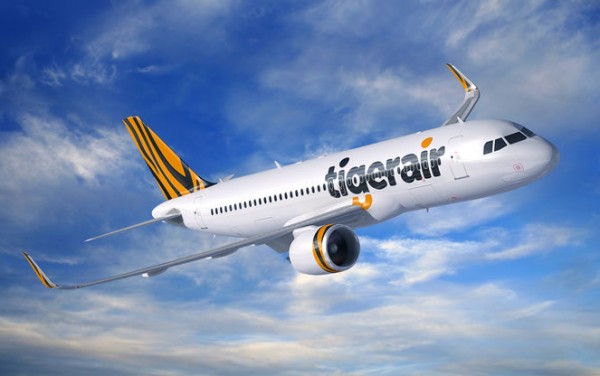
Low cost carrier Tigerair has been well supported and could increase its services. Jetstar is also in the Airport’s sights.
But the acknowledgement from Lonely Planet a couple of years ago, tourism numbers that continue to grow and strong interest in Canberra, also made the national capital an attractive inbound destination.
Long term the Airport hopes to see routes to Asia, including Bali, Kuala Lumpur, Hong Kong and Japan, and to the Pacific, with connections to the US.
Mr Thompson hoped to see the return to Canberra of routes such as Hobart, and that Darwin made sense, as well as more regional destinations such as Albury-Wodonga (within five years), Cairns and Ballina/Byron Bay.
What he called the third piece of the puzzle, which the Airport was close to cracking, was freight export.
Coming out of a very rich primary produce region, it required a quick turnaround for perishables.
“The fact that you can pick your cherries in Young at 12 o’clock, load them on a truck at two, have them down to Canberra at four and have them in Singapore at five the next morning is a really attractive proposition and one we want to explore and develop,” Mr Thompson said.
Singapore opened up to Asia and Europe, and Doha in the Middle East.
“It’s not just cherries, it’s oysters down the coast, fresh meat produce. There is a range of opportunities we see for exporters from this region who are currently going to Sydney or Melbourne,” Mr Thompson said, noting the advantages of no night curfew, no capacity constraints and not having to deal with Sydney traffic.
Mr Thompson said the Airport’s relationship with Qantas was now ‘very good’ after a fractious time over flight cancellations.
“They’re our major partner, from time to time partners have disagreements but we’re working well with them,” he said.
The master plan says the Airport is continuing talks with the ACT Government on road links to Majura Parkway and the city, and the capacity of Pialligo Avenue but Mr Thompson said it would be premature to talk about Airport contributions to developing these.
Across the Airport site, jobs are forecast to grow from 14,000 now (9,500 confirmed in Brindabella Business Park), to 16,000 by December 2020, 20,000 by 2025/28 and 36,000 by 2040 in response to growth in aviation as well as retail and office expansion and the region’s economy.












